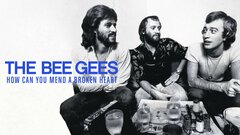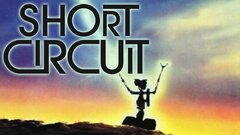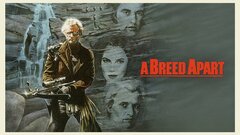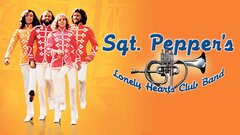Maurice Gibb

Musician • Singer • Songwriter
Birth Date: December 22, 1949
Death Date: January 12, 2003 — 53 years old
Birth Place: Douglas, Isle of Man
Spouses: Lulu
Siblings: Barry Gibb, Andy Gibb, Robin Gibb
Bands: Bee Gees
Though frequently described as the "quiet" member of the Bee Gees, Maurice Gibb was, in fact, a key member of the group in ways that the public rarely saw. He was a vital part of their signature vocal harmonies, and contributed bass and other instruments to their countless hit songs - from 1960s pop like "To Love Somebody" through their breakout as disco stars with the Saturday Night Fever soundtrack. But the perpetually hat-wearing Gibb's greatest contribution to the Bee Gees was his humor and calm presence, which helped to unify his often sparring brothers, Barry and Robin, when external or internal pressures threatened the group.
Gibb was able to maintain that role for over four decades, even in the midst of personal troubles, including a serious alcohol problem that nearly derailed his life. His sudden death in 2003 shocked fans around the world, who recalled his subtle but vitally important impact on one of the most successful musical acts in history.
Maurice Ernest Gibb and his fraternal twin brother, Robin, were born Dec. 22, 1949 on the Island of Man. They were two of five siblings by their parents, Hugh and Barbara Gibb, which included older brother Barry, sister Lesley, and later, a younger brother, Andrew. In 1953, the family moved to their father's hometown of Manchester, England, where the brothers had their first exposure to rock-n-roll music from their sister, and discovered that they could sing in perfect brotherly harmony.
According to pop culture legend, Barry, Robin and Maurice made their public debut at a local theater, where children could lip-sync to records between features. The brothers brought a cumbersome 78-rpm record for their performance, but it broke en route to the theater, forcing them to sing live. Reportedly, the response was so positive that they decided to form a band.
Maurice Gibb and his brothers began performing in earnest after the family moved to Queensland, Australia in 1958. Billed as the Bee Gees, which stood for the Brothers Gibb, they were a popular live act and appeared frequently on television, but failed to generate much interest in their recordings. In 1966, they returned to England, where they discovered that their single, "Spicks and Specks," had gone to No. 1 on the Australian charts during their voyage. They attracted the attention of manager Robert Stigwood, who mounted an expensive promotional campaign for the group in 1967 that proclaimed them the year's "Most Significant New Talent."
The gambit worked, as evidenced by their first singles, the mournful, psychedelic "New York Mining Disaster 1941" and "To Love Somebody," a soulful ballad originally intended for Otis Redding. Both songs broke the Top 20 singles charts in the U.S. and U.K., and established the Bee Gees as a pop act to watch.
The band's initial lineup featured Barry on rhythm guitar and lead vocals, which he shared with Robin. Maurice's contributions seemed limited to backup and harmony, but in fact, he anchored the group's material by providing bass on most of their recordings and in live performances. He was also the Bee Gee's resident arranger, which earned him a shared writing credit on many of their hit songs, and expanded the band's pop-rock sound by playing organ, piano and Mellotron on numerous songs.
In addition to his musical duties, Maurice would provide a much-needed sense of good cheer that often deflated tensions within the group over slights from critics or between older brother Barry and the very opinionated Robin, who often clashed.
His signature levity failed to prevent Robin from briefly quitting the group in 1969, leaving the Bee Gees a two-man act. They generated a hit single, "Don't Forget to Remember," before deciding to split and pursue their own fortunes. Maurice set to work on a variety of low-profile projects, including music for a 1970 music called "Sing a Rude Song" and a solo album, The Loner, which never fully materialized beyond a pair of songs, including the title track, which turned up on the soundtrack for an obscure British drama called "The Hero" (1971).
Gibb's life outside the recording studio demanded most of his attention during this period. He had married Scottish pop sensation Lulu in a 1969 ceremony that was mobbed by 3,000 fans and declared the show business wedding of the year by the English press. But the union ran into trouble shortly after the couple settled in their new home in the posh London suburb of Highgate. Gibb had developed a taste for the nightlife, which, coupled with the beginnings of a serious drinking problem and out-of-control spending, put a strain on the new marriage.
In the midst of this turmoil, the Bee Gees reunited, and for a brief period, the reformed act appeared to be even more accomplished than their previous incarnation. Their first post-breakup single, 1970's "Lonely Days," showed a deeper mastery of pop music with its Abbey Road- esque tempo changes, and reached No. 3 in the United States. Its follow-up, the gorgeous ballad "How Can You Mend a Broken Heart," marked their first visit to the top of the Billboard Hot 100 chart and later provided Al Green with a major hit in 1972.
But within a few years, the Bee Gees' brand of sweeping, romantic pop had lost its luster with audiences. A pair of failed albums left the brothers feeling creatively spent and unsure of their direction. For Maurice, the sense of impending failure was deepened when Lulu asked him for a divorce in 1973, sending him into a depression.
At the suggestion of their label chief, the legendary Ahmet Ertegun, the Bee Gees began working with producer Arif Mardin, who recognized their knack for blue-eyed soul and began pushing them towards more R&B-inclined material. In 1975, they unveiled a new sound, dominated by funk-driven beats and Barry and Robin's soaring falsettos that hewed closely to the growing sound of disco. Maurice had surrendered bass duties during this period, but continued to contribute keyboards and arranging.
The first single from the Mardin sessions, "Jive Talkin'," provided them with their second No. 1 single in the States, and was quickly followed by Top 10 hits like "Nights on Broadway" and another No.1 with "You Should Be Dancing." But the success of these disco-flavored tracks paled in comparison to their next effort: the Saturday Night Fever soundtrack.
Brought on during post-production on the John Badham film, the Bee Gees penned six original songs for the album, and recorded four themselves - "Stayin' Alive," "Night Fever," "How Deep Is Your Love" and "More Than a Woman," which was also recorded by Tavares for the LP. All but "Woman" reached the top of the singles charts, while the Tavares version broke the Top 10. An additional song penned by the brothers from the record, "If I Can't Have You" by Yvonne Elliman, also reached No. 1 on the pop singles chart.
During an eight month period in 1977 and 1978, the Bee Gees had six No. 1 songs on the U.S. charts, including "I Just Want to Be Your Everything" performed by their younger brother, Andy, who had launched his own brief but successful music career. The Saturday Night Fever soundtrack would earn five Grammys, including Album of the Year in 1979, and go on to become the ninth largest-selling album worldwide in recording history.
The explosive success of the film and LP of Saturday Night Fever made the Bee Gees in-demand writers for other acts hoping to transform their own careers in a similar fashion. While Barry and Robin penned material for Samantha Sang ("Emotion") and Frankie Valli ("Grease"), Maurice produced the Osmonds' obscure 1979 album Steppin' Out, and released a solo single, "Hold Her In Your Hand," as well as the score for Australian filmmaker Philippe Mora's "A Breed Apart" (1984) with Jimmie Haskell.
More importantly, he settled down in 1975 with his girlfriend, Yvonne Spencely, and had two children, Adam and Samantha. Spencely was also largely credited with helping Gibb to gain control of his alcohol issues. When the Bee Gees returned to recording new material for themselves, the result was another trifecta of No. 1 hits, including "Too Much Heaven," and a sold-out North American tour. But as the 1970s drew to a close, the Bee Gees' grip on the pop market proved tenuous.
Disco was slowly losing its impact with listeners, who often displayed a visceral dislike for the music through disc jockey-sponsored rallies and wholesale destruction of disco records. Since the Bee Gees were unquestionably the leading figures in disco at the time, their music received the brunt of the public's ire. The highly publicized failure of "Sgt. Pepper's Lonely Hearts Club Band" (1978), a puerile fantasy starring the brothers and Peter Frampton in a musical built around the songs of the Beatles, also took the group down a peg.
The brothers shrewdly decided to pull in the reins on their singing careers and focus primarily on songwriting. Maurice was credited as co-writer with Barry and Robin on such hits as "A Woman in Love" (1980) by Barbra Streisand and the entirety of Kenny Rogers' LP The Eyes That See in the Dark, which featured "Islands in the Stream," a duet with Dolly Parton that reached No. 1. On his own, Maurice also produced Runaway, a 1986 album by Swedish pop singer Carola, and penned the score for the obscure American horror movie "The Supernaturals" that same year. Though his score went unused, he did contribute a cameo to the film as a Union soldier.
Despite their busy careers in Europe, the Bee Gees remained persona non grata as artists in the United States, as evidenced by the failure of the 1987 record, E.S.P., which was a stellar success in virtually every other country on the strength of the single "You Win Again." The Gibb brothers suffered an even deeper loss the following year with the death of their baby brother Andy, whose rampant drug and alcohol use in the 1980s left him susceptible to a fatal inflammation of the heart. So devastated was Maurice by Andy's premature passing, he returned briefly to drinking before seeking help through clinical treatment.
In 1989, the Bee Gees roared back to the charts with "One," the ebullient lead single from their album of the same name. The song brought the band back to the Top 10 for the first time in over a decade, and sparked a revival that lasted for the better part of the next decade. The following year, they received a four-CD retrospective with the box set Tales from the Brothers Gibb: A History in Song, which was soon followed by a string of hit albums, culminating in Still Waters, their first Top 20 album since the 1970s.
The decade was also rich with tributes, including induction into the Songwriters Hall of Fame in 1994 and the Rock and Roll Hall of Fame in 1997. The following year, their music from "Saturday Night Fever" became part of a popular stage musical based on the film. In 2001, all three brothers were made Commanders of the British Empire.
For Maurice, the 1990s and early 21st century were a period of contentment. The Bee Gees had enjoyed a rare third-act career revival, and their vast body of past work was finally receiving the praise it deserved. With brother Barry nearby, he enjoyed life with his family in Florida, where he enthusiastically pursued his hobby of paintball, even owning a shop devoted to the sport, Commander Mo's, in North Miami Beach. Gibb's children had shown interest in a musical career, and he produced an early collaboration between Adam and Samantha Gibb called Luna Park.
In 2001, the Bee Gees completed This is Where I Came In, their 22nd studio album. The record featured two songs written by Maurice and featuring him on lead vocals, including "Man in the Middle," which described his acceptance of his role in the group as its unifying force. The album, which reached the Top 20 in the United States, was sadly their last as a trio.
In 2003, Maurice Gibb died of a heart attack while undergoing emergency surgery for a strangulated intestine. His grief-stricken brothers announced that they would effectively retire the Bee Gees name as a tribute to Maurice, and performed together only sporadically the next decade. Both Robin and Barry were present to accept the Grammy Legend Award in 2003. Two years later, Maurice's final produced work, an album by his daughter Samantha under the name M.E.G. - her father's initials - saw its release.
By Paul Gaita
Credits

The Bee Gees: How Can You Mend a Broken HeartStream

Sandy & Junior: Imortal

Bee Gees: Everlasting Words

The Bee Gees at the BBC....and Beyond

The Story of the Bee Gees

In Dreams

VH1 Salutes The Bee Gees

It's Lulu

Bee Gees: One Night Only

Bushwhacked

TOTP 2

A '70s Celebration: The Beat Is Back

Short CircuitStream

A Breed ApartStream

Sgt. Pepper's Lonely Hearts Club BandStream














